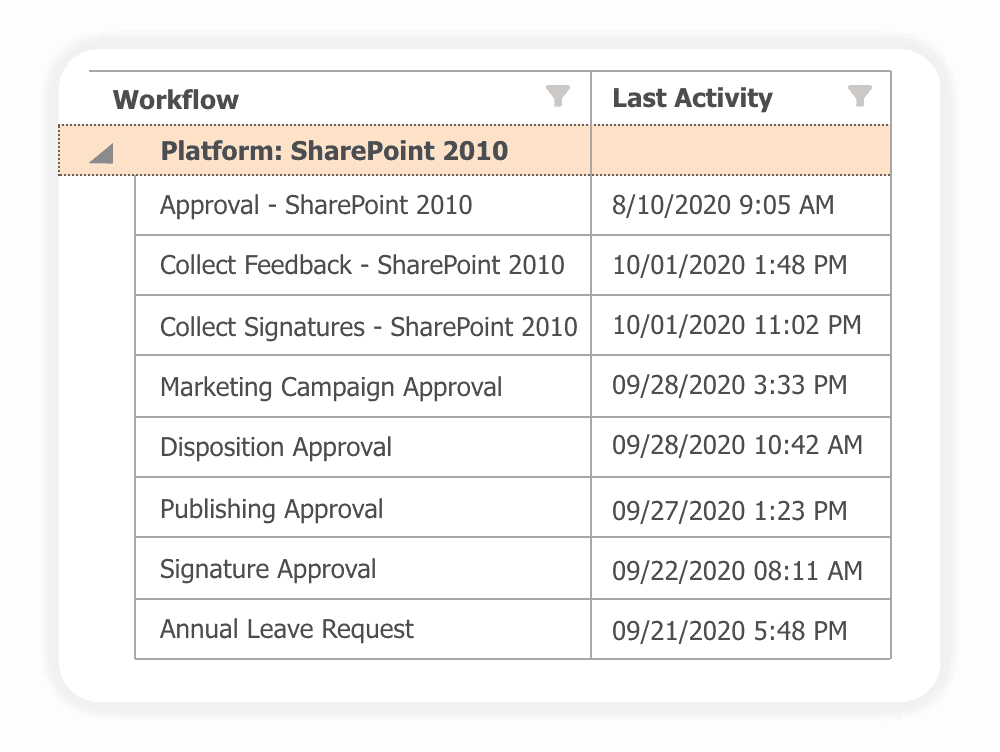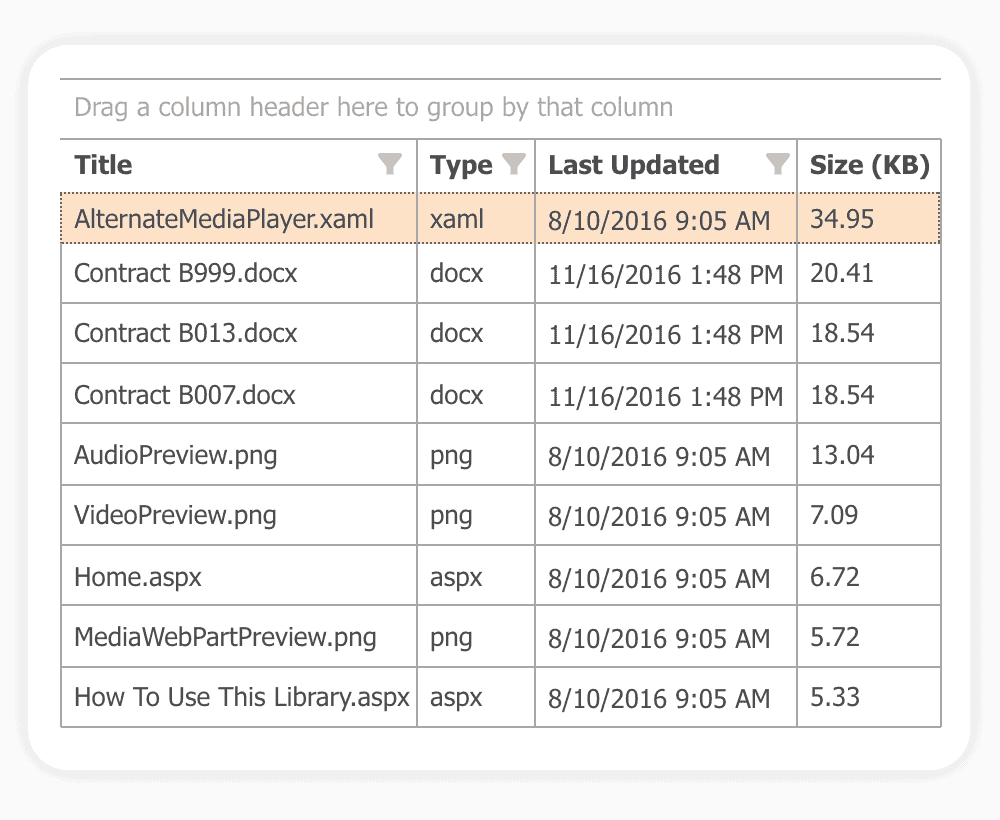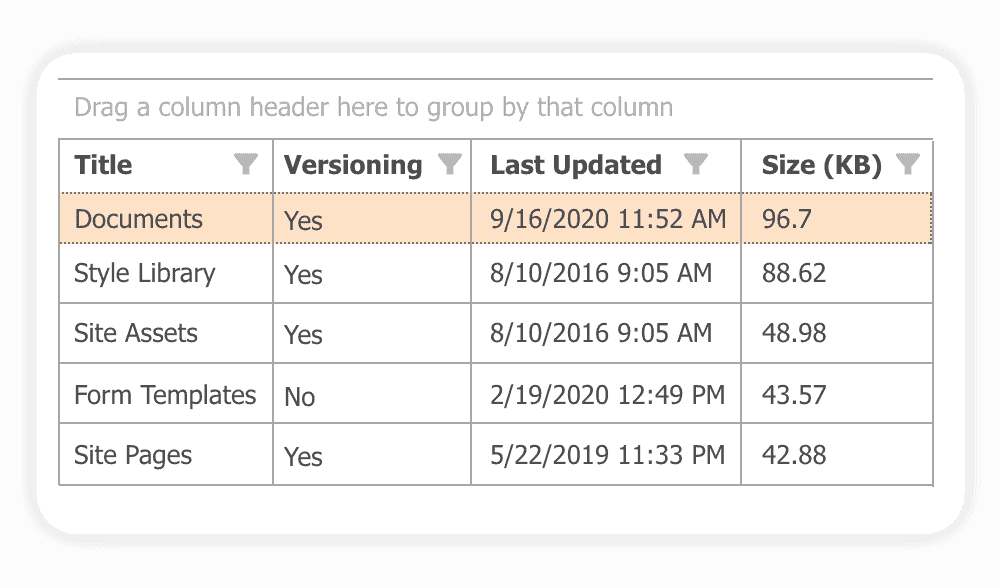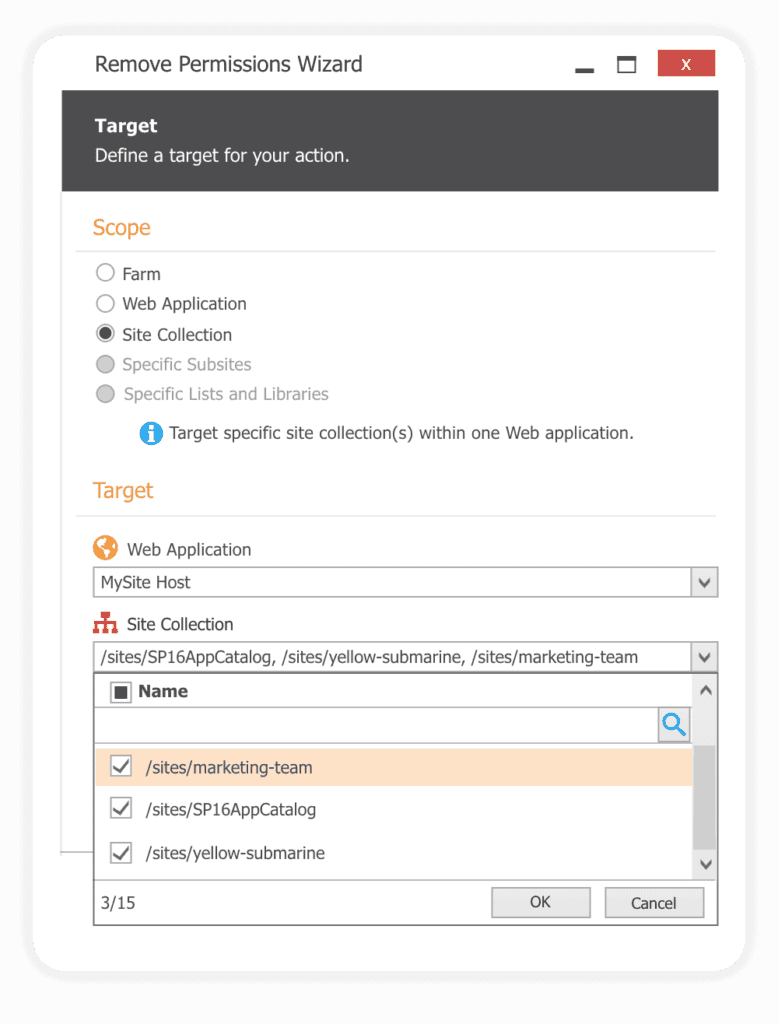What’s new – 11.0
After months of hard work, we are proud to present to you SPDockit 11.0! This new update comes with a great deal of improvements and some new reports. If you’re not yet a customer, download a free trial.
Upgrade nowFind everything about your Workflows 11.0
With this new release, SPDockit will help you find all the workflows on your farm! Since SharePoint 2010 workflows have been retired for SharePoint Online Classic, and SharePoint 2013 workflows have been deprecated, there is a big push from Microsoft to switch to modern workflows using Power Automate flows.
So, if you are planning a SharePoint upgrade or cloud migration, it is very important to find your classic SharePoint workflows. So, if you are planning a SharePoint upgrade or cloud migration, it is very important to find your classic SharePoint workflows.
SPDockit’s reports will help you with that! They show all your SharePoint 2010 Workflows and SharePoint 2013 Workflows. On top of the workflow name list, SPDockit shows workflow usage information: when it was last used and the number of active instances. This way, you can easily figure out which workflows are actively used so you can switch them to a new model during the migration. On the other hand, you can leave inactive workflows behind, saving the company time and money.
You can also see all the important configuration settings such as workflow associations with lists, sites or content types. You can easily distinguish between custom and built-in workflows.

Audit with ease with powerful filters 11.0
From this version forward, SPDockit’s visual picker allows you to filter audit logs by different hierarchy levels: site collection, folder, or even a specific document. You also have options to search logs by user, date range, or specific events to ensure you find the information you are looking for.
Whether you want to comply with regulations such as HIPAA or GDPR or investigating data breaches, SPDockit’s log filter will help you quickly and efficiently navigate through your users’ activity.
Get rid of Unused SharePoint Groups 11.0
The new version of SPDockit will help you detect unused SharePoint groups! During the site collections’ lifetime, it is normal that its content and users change. New people are added, some are removed, and sometimes a group is left without permissions. The reason for that might be an accidental deletion of permissions or the groups have simply served their purpose.
That’s where SPDockit comes in handy. Unlike standard SharePoint permissions reports, it shows you all unused groups and gives you an option to remove them right away, avoiding unnecessary confusion or errors.
Document PowerPivot settings on SharePoint 2016 farms 11.0
SPDockit now fully supports documenting PowerPivot service application settings for SharePoint 2016. SharePoint documentation has always been very important to our customers, so we try to improve it constantly by supporting new services. You can also set up notifications that will let you know if any of your PowerPivot service application settings change.
Learn how your site lists and files use your storage11.0
In this version we added two new reports to SPDockit to give you a detailed insight on storage usage. It will not only show you all the list/libraries and files you have with their sizes, but provide additional information like file versioning usage, the number of old versions of the document, the last date of a file modification.

Since document versioning can have a great impact on storage space, those reports can help you understand why a certain file is using so much space. More importantly, you can act accordingly when needed and save on unnecessary storage costs.

Bulk remove user permissions 11.0
This version of SPDockit brings you a brand-new Remove Permissions wizard! We integrated this action based on our customers’ feedback. A lot of them use policies that require them to remove user permissions from one or multiple site collections due to the offboarding process or ending of a project.
With SPDockit you can remove all user permissions from multiple site collections in bulk in a few simple steps – without having to use complex PowerShell scripts. If you prefer so, you can even import the list of multiple users from a csv file to speed up this process.
